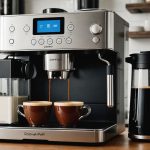Mobile apps can enhance your productivity, but disorganization can lead to wasted time and frustration. This guide explores effective strategies to streamline your app usage, ensuring that your most important tools are just a tap away. From categorization techniques to widget utilization and minimalist approaches, you’ll discover methods tailored to your habits and preferences. Embrace a more organized digital life and watch your efficiency soar!
Understanding the Importance of Mobile App Organization
In today's fast-paced digital world, mobile app organization plays a crucial role in enhancing both productivity and efficiency. With countless apps available at our fingertips, a cluttered mobile screen can easily lead to frustration and decreased work output. A well-organized app layout allows users to locate and launch applications quickly, saving valuable time and reducing stress.
In parallel : Transform Your Home”s Atmosphere: Using Your Smartphone to Master Smart Lighting Control and Monitoring
One of the common challenges users face is the overwhelming number of apps, which can lead to a chaotic digital environment. This disorganization often results in wasted time searching for specific apps, ultimately hindering productivity. By categorizing apps into folders or arranging them based on usage, users can create a seamless and efficient workflow.
The benefits of a well-structured mobile app environment extend beyond mere convenience. It fosters a sense of control and clarity, enabling users to focus on tasks without unnecessary distractions. Moreover, streamlined app organization can lead to improved decision-making as users can access the tools they need swiftly and without confusion. Embracing effective app management strategies can significantly enhance daily productivity and efficiency, making it an essential practice for anyone looking to optimize their digital experience.
Also to discover : Mastering Your Smartphone: A Step-by-Step Guide to Controlling Your Smart Coffee Maker
Categorizing Mobile Apps Effectively
Organizing mobile apps into app categories can significantly boost mobile productivity. By creating distinct categories, users can navigate their devices more efficiently and minimize distractions.
Essential App Categories
To start, consider grouping apps into common categories such as:
- Productivity: Includes apps for tasks, calendars, and note-taking.
- Social: Encompasses communication platforms and social media.
- Entertainment: Covers games, streaming services, and music apps.
These categories provide a foundation for a more streamlined experience.
Customizing Categories for Personal Use
Personalization is key to effective organization strategies. Tailor categories to fit individual needs by assessing which apps are most frequently used. For instance, a photography enthusiast might create a dedicated "Photography" category for editing tools and galleries. This customization ensures that users can access their preferred apps swiftly.
Balancing Work and Personal Apps
Maintaining a balance between work and personal apps is crucial. Consider creating separate categories for work-related and leisure apps to prevent overlap. This separation helps maintain focus during work hours and promotes relaxation during downtime. By thoughtfully categorizing apps, users can enhance their digital experience and boost overall productivity.
Utilizing Folders and Subfolders
Organizing your apps into app folders is a powerful strategy to declutter your home screen and enhance accessibility. By grouping related apps, you create a cleaner, more efficient interface, making it easier to find what you need without scrolling through endless pages. This not only saves time but also reduces cognitive load, allowing you to focus on tasks more effectively.
Creating Effective Subfolders
To further refine your organization, consider utilizing subfolders within your main folders. For example, within a Productivity folder, you could create subfolders for "Work" and "Personal" tasks. This layered approach ensures that your productivity tools are organized in a way that mirrors your daily activities, making them more intuitive to access.
Naming Conventions for Usability
When setting up folders and subfolders, thoughtful naming conventions are crucial. Use clear and concise labels that immediately convey the purpose of the folder. For instance, instead of generic names like "Miscellaneous," opt for specific titles such as "Travel Apps" or "Health & Fitness." This enhances usability by providing immediate context, ensuring you can navigate your device efficiently.
Leveraging Productivity Apps for Organization
Incorporating productivity apps into your mobile management strategy can significantly enhance your organizational skills. These organization tools are designed to streamline your digital environment, allowing for efficient access to essential applications and tasks.
Top Productivity Apps for Mobile Organization
Several productivity apps stand out for their ability to assist in organizing other apps. Noteworthy options include Trello, Evernote, and Todoist. These apps offer features such as customizable boards, note-taking capabilities, and task lists that can be tailored to fit individual needs. By utilizing these tools, users can create a more structured digital workspace.
Integrating Task Management with App Organization
Task management features within productivity apps can further simplify app access. By integrating tasks with app organization, users can prioritize their activities and ensure that important apps are readily available. This integration helps in maintaining focus and increasing efficiency, as users can quickly navigate to the tools necessary for completing their tasks.
Synchronization Across Devices
Cross-device synchronization is crucial for maintaining consistency in mobile management. Many productivity apps offer synchronization features that allow users to access their organized apps and tasks across multiple devices. This ensures that users have a unified experience, regardless of whether they are using a smartphone, tablet, or computer.
Implementing the 80/20 Rule in App Usage
The 80/20 rule, also known as the Pareto Principle, is a powerful tool for enhancing app efficiency. It suggests that 80% of outcomes are often driven by 20% of efforts. Applied to mobile apps, this means a small selection of apps likely accounts for the majority of your productivity.
Understanding the 80/20 Rule in Mobile Apps
In the context of mobile apps, the 80/20 rule helps identify which apps are crucial for your daily tasks. By focusing on these key apps, you can streamline your digital environment, reducing the clutter of less-used applications.
Identifying the Most Frequently Used Apps
To apply the 80/20 rule, start by assessing your app usage. Many smartphones offer built-in tools that track which apps you use most frequently. Use this data to pinpoint the apps that contribute significantly to your productivity.
Strategies for Minimizing the Use of Less Important Apps
Once you've identified your core apps, consider strategies to minimize distractions from less important ones. This could involve deleting unused apps or moving them to a separate folder. By focusing on your essential apps, you enhance your productivity strategies, ensuring that your mobile device remains a tool for efficiency rather than distraction.
Regular Maintenance and Review of App Organization
Regular app maintenance is essential for sustaining a streamlined digital environment. By conducting a periodic review, users can ensure their mobile devices remain efficient and clutter-free.
Setting a Schedule for App Review
Establishing a routine for app review is crucial. Consider setting a monthly or quarterly reminder to evaluate your apps. This schedule helps maintain efficiency by ensuring your app collection aligns with your current needs and lifestyle.
Evaluating App Usage and Relevance
During each review, assess the relevance of each app. Examine your usage patterns to determine which apps are frequently used and which have become obsolete. This evaluation process is vital for maintaining a functional and efficient app layout.
Deleting Unused Apps
Routine checks are important for identifying and deleting unused apps. Begin by analyzing your app usage data to identify those that are rarely opened. Removing unnecessary apps not only frees up storage space but also enhances device performance. Best practices include uninstalling apps that haven't been used in the last three months. This proactive approach ensures your mobile device remains a tool for productivity, not distraction.
Visual Aids and Layout Optimization
Optimizing your app layout is crucial for enhancing accessibility and efficiency on mobile devices. A well-organized visual organization can significantly reduce the time spent searching for apps and improve overall user experience.
How to Optimize App Layout for Quick Access
To achieve a streamlined mobile design, start by placing your most frequently used apps on the home screen. This ensures quick access and minimizes the need to scroll through multiple pages. Group similar apps together based on function or usage frequency to create a logical flow.
The Role of Color-Coding in App Organization
Color-coding is an effective strategy for visual organization. Assigning specific colors to different categories of apps can help you identify them at a glance. For example, use cool colors for work-related apps and warm colors for leisure apps. This method not only enhances the aesthetic appeal of your screen but also aids in quick recognition and retrieval of apps.
Utilizing Widgets for Enhanced Productivity
Incorporating widgets into your app layout can further boost productivity. Widgets provide real-time updates and shortcuts to essential features without opening the app. Consider adding widgets for calendars, to-do lists, or weather updates to keep important information readily accessible.
Overcoming Common App Organization Challenges
In the realm of app organization, users often encounter numerous challenges that can hinder productivity. Addressing these issues with effective solutions is crucial for maintaining an efficient digital environment.
Dealing with App Overload
One prevalent challenge is app overload, where users accumulate more apps than they can manage. To combat this, periodically review and categorize apps based on necessity. Implementing strategies like the 80/20 rule can help prioritize essential apps, thus reducing clutter and enhancing focus.
Managing Frequent App Updates
Frequent app updates can disrupt organization efforts. To manage this, set a routine for checking updates and allocate specific times for app maintenance. This ensures that updates are handled efficiently, preventing them from becoming a source of disarray. Consider enabling automatic updates for non-critical apps to streamline the process.
Staying Motivated to Maintain Organization
Sustaining motivation for ongoing app organization can be challenging. To stay motivated, set achievable goals and reward yourself for maintaining an orderly digital space. Use productivity tips such as setting reminders for regular app reviews and celebrating small victories in organization. By fostering a positive mindset, users can keep their mobile devices organized and efficient.
Conclusion and Next Steps
In the pursuit of mobile app organization, implementing actionable steps is key to achieving significant productivity improvement. Begin by reviewing the strategies covered, such as categorizing apps, utilizing folders, and applying the 80/20 rule. These methods are designed to streamline your digital environment, making it more efficient and user-friendly.
To further enhance your productivity improvement, consider integrating productivity apps that align with your organizational goals. These tools can help maintain a structured digital workspace, ensuring you stay focused on tasks that matter most. Regularly reviewing and updating your app layout is another critical step, preventing clutter and keeping your device optimized.
For those interested in diving deeper into mobile app organization, numerous resources are available. Books, articles, and online courses can provide additional insights and techniques to refine your approach. By continually exploring new strategies and staying informed, you can adapt to changing needs and maintain a productive digital life.
Embrace these actionable steps to transform your mobile device into an efficient tool that supports your daily activities. With dedication and the right strategies, achieving a well-organized app environment is within reach.











